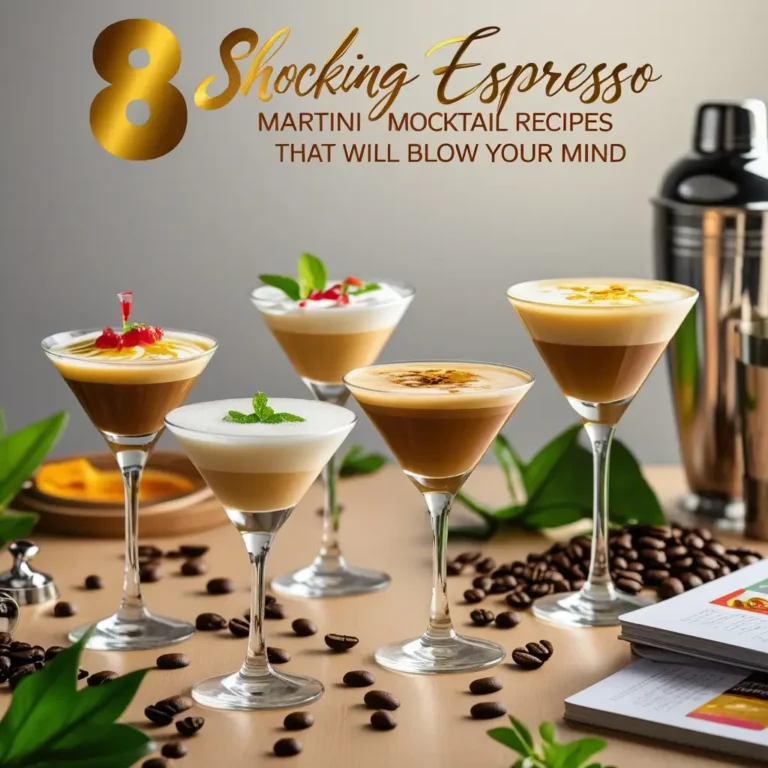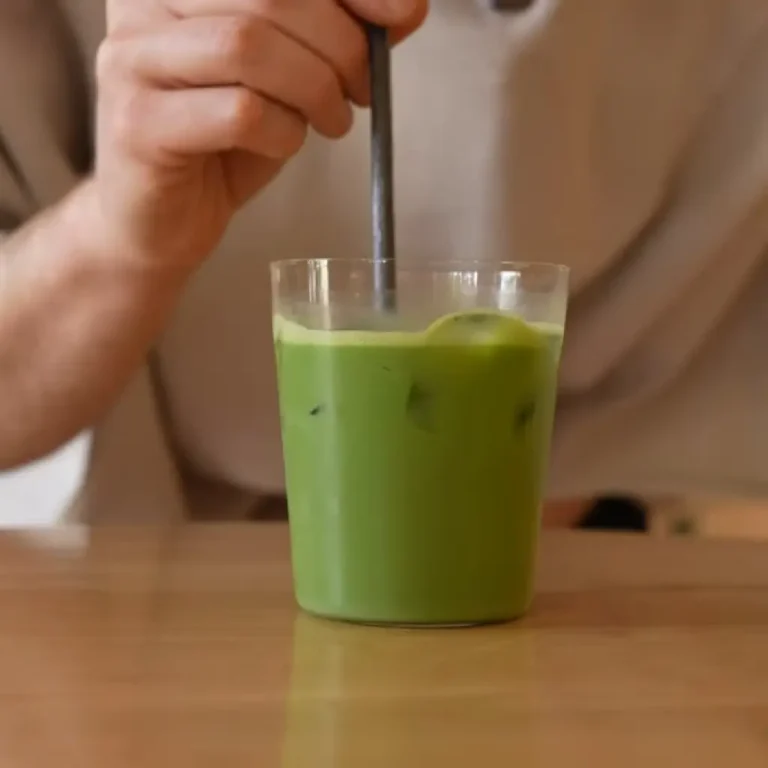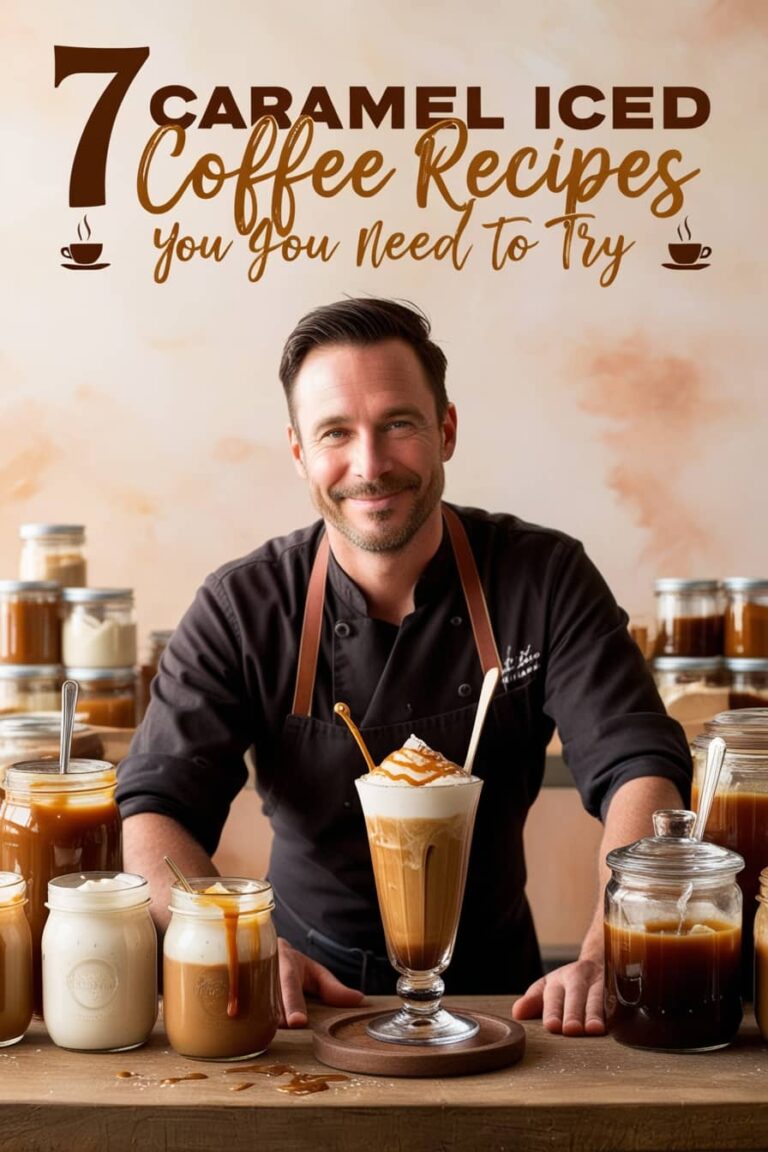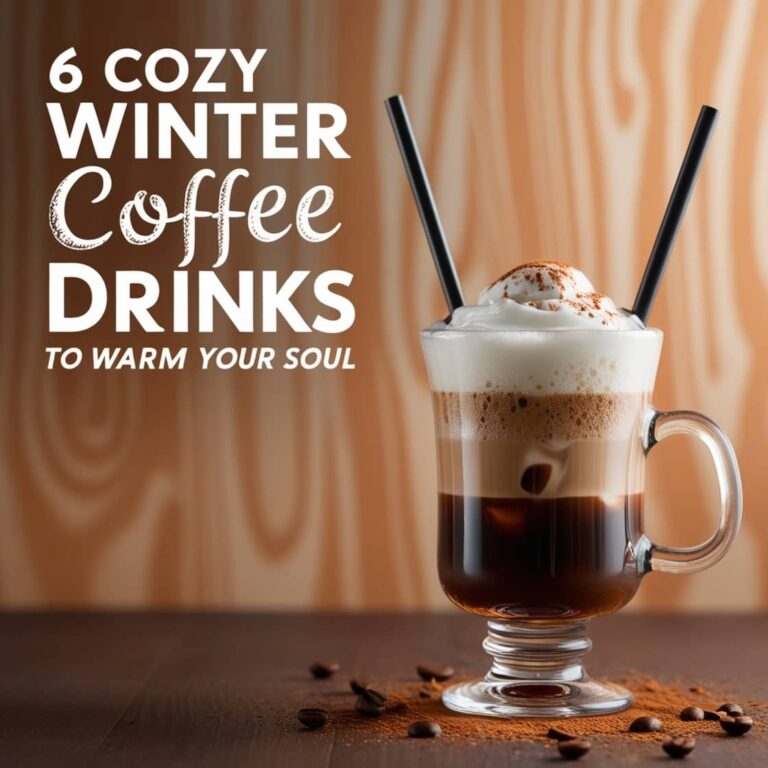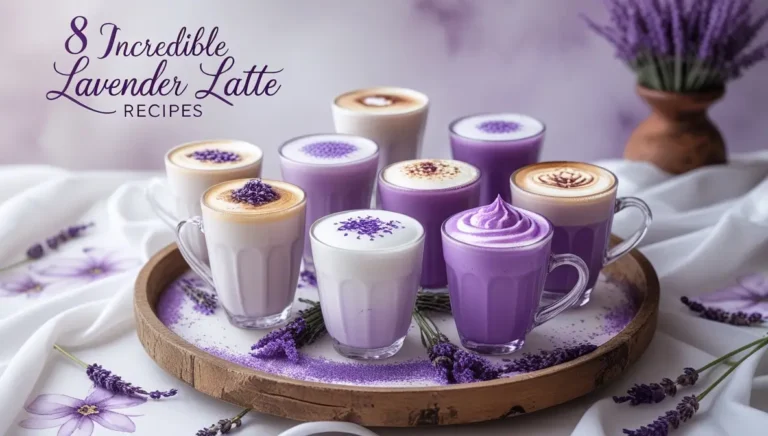Cold Brew Tonic: 3 Ultimate Refreshing Coffee Cocktail Guide
Introduction: The Rise of the Cold Brew Tonic
Picture this: you’re holding a tall glass filled with golden, effervescent bubbles dancing around rich, dark coffee. That first sip hits different—bitter meets sweet, smooth meets sparkly, and suddenly you’re transported to that perfect summer afternoon state of mind. That’s the magic of a Cold Brew Tonic, my friend.
I’ve been slinging espresso and cold brew for years, and let me tell you, this drink changed everything for me. It’s not just another trendy coffee beverage—it’s a spiritual experience in a glass. The way the tonic water’s quinine bitterness complements the coffee’s natural complexity, while carbonation lifts everything into this effervescent dimension? Pure alchemy.
But here’s the thing—you can’t just throw regular iced coffee in there and call it a day. Cold brew concentrate is the secret weapon that makes this drink work. Unlike regular iced coffee (which is just hot coffee cooled down), cold brew is steeped for 12-24 hours in cold water. This slow extraction process creates a less acidic, smoother, and more concentrated flavor profile that can stand up to the tonic water without getting lost. Regular iced coffee would just taste diluted and sad—trust me, I’ve made that mistake.
The Cold Brew Tonic ratio is everything in this recipe. Too much coffee and you’ll overpower the delicate botanical notes of the tonic. Too little and you’re basically drinking fancy soda water. Getting that balance right is what separates a good Cold Brew Tonic from a transcendent one.
Quick Overview Table
| Recipe Name | Prep Time | Difficulty | Key Feature |
|---|---|---|---|
| The Classic | 2 min | Easy | Balanced ratio |
| The Robust | 3 min | Medium | High coffee intensity |
| The Citrus Twist | 5 min | Medium | Flavor customization |
Recipe 1: The Classic 1:3 Cold Brew Tonic (The Standard)

Let’s start with the foundation—the recipe that introduced me to this beautiful drink. This is your gateway Cold Brew Tonic, the one that’ll make you understand why baristas worldwide are obsessed with this combination.
Ingredients & The Standard Ratio
The classic Cold Brew Tonic ratio is beautifully simple: 1 part cold brew concentrate to 3 parts tonic water. Here’s what you need:
- 2 oz (60ml) cold brew concentrate (super chilled!)
- 6 oz (180ml) premium tonic water (must be ice cold)
- Ice cubes (large format preferred)
- Optional: citrus wheel for garnish
Pro Tip: This is non-negotiable, folks—your tonic water must be refrigerator-cold, not room temperature. Room temp tonic will go flat the second it hits ice, and you’ll lose all that gorgeous effervescence that makes this drink special. I keep my tonic bottles in the back of my fridge where it’s coldest. It’s a small detail that makes a huge difference in the final experience.
Step-by-Step Assembly
Here’s where technique matters more than you’d think:
- Fill your glass with large ice cubes (about 3-4 cubes)
- Pour the tonic water first—yes, first! Let it settle for a moment
- Slowly pour the cold brew concentrate over the back of a spoon, letting it cascade gently onto the tonic
- Watch the magic happen as the coffee creates this beautiful layered effect
- Give it the gentlest swirl (or let your guest do the mixing for visual drama)
- Garnish with a citrus wheel if you’re feeling fancy
The reason we add the cold brew last is all about physics and presentation. Cold brew is denser than tonic water, so it’ll naturally sink and create this gorgeous layered look—dark coffee at the bottom, golden bubbles at the top. Plus, pouring gently preserves maximum carbonation. If you just dump everything together, you lose half the fizz right away.
Recipe 2: The Concentrated & Robust Tonic (For Coffee Lovers)
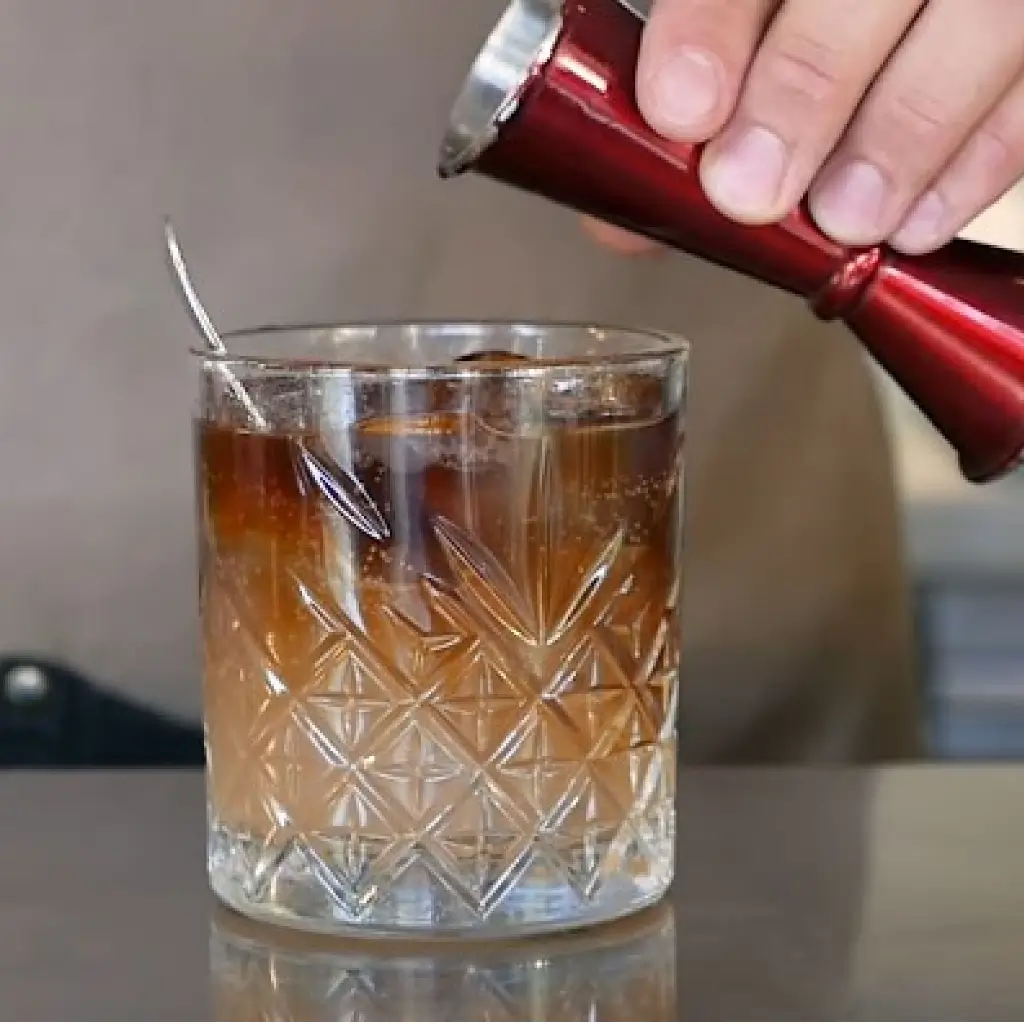
Okay, so the classic version is great, but what if you’re like me and you need that serious coffee punch? What if you want the tonic to support the coffee, not share equal billing? That’s where this robust Cold Brew Tonic variation comes in.
Ingredients & The Robust Ratio
This version flips the script with a more assertive 1:2 Cold Brew Tonic ratio (or even 1:2.5 if you’re easing into it):
- 3 oz (90ml) cold brew concentrate
- 6 oz (180ml) tonic water
- Large ice cubes
- Optional: coffee bean garnish (yes, really—it looks cool and releases aroma)
This ratio gives you a drink where coffee is the star and tonic is the supporting actor. You’ll taste the origin characteristics of your beans, all the chocolate or fruity notes, while the tonic adds effervescence and a subtle bitter complexity.
Instructions
- Same ice routine—fill that glass with big cubes
- Add your tonic water first
- Pour your cold brew concentrate slowly over the ice
- Give it a gentle stir (more mixing needed here since there’s more coffee)
- Top with a few whole coffee beans floating on top for aroma
Quality check: This version absolutely demands high-quality cold brew concentrate. You’re using more of it, so any flaws in your brew will be magnified. If you’re making it at home, use a 1:4 coffee-to-water ratio during brewing (that’s 1 cup of coarsely ground coffee to 4 cups of cold water, steeped for 18-24 hours). Store-bought concentrate works great too—just make sure it’s undiluted concentrate, not ready-to-drink cold brew.
Recipe 3: The Citrus-Infused Cold Brew Tonic (Flavor Variation)
Now we’re getting creative! This is where Cold Brew Tonic variations really shine. The citrus version is my summer go-to, especially when I’m feeling like I need something refreshing and complex.
Ingredients & Additions
- 2 oz (60ml) cold brew concentrate
- 6 oz (180ml) tonic water
- 1 oz (30ml) fresh-squeezed lime juice
- 0.5 oz (15ml) simple syrup (or honey syrup for depth)
- Grapefruit peel or lime wheel
- Fresh mint sprig (optional but encouraged)
- Large ice cubes
The citrus brings brightness that makes the coffee’s fruity notes pop, while the simple syrup balances the combined bitterness of coffee, tonic, and citrus. It’s like a coffee mojito met a G&T and had a beautiful baby.
Instructions
- Start with your simple syrup at the bottom of the glass
- Add fresh lime juice
- Gently muddle a grapefruit peel (just a few presses to release oils—don’t obliterate it)
- Add ice
- Pour tonic water
- Top with cold brew concentrate using the same slow-pour technique
- Express the oils from another citrus peel over the top
- Slap a mint sprig between your hands (releases the aromatics) and place on top
This version takes 5 minutes because you’re building layers of flavor. But it’s worth every second. The first time I made this for a customer who said they “didn’t like coffee,” they came back the next day asking for the recipe. That’s the power of balancing your Cold Brew Tonic ratio with complementary flavors.
Choosing the Best Tonic Water
Let’s talk about the unsung hero of this drink. Most people don’t realize that tonic water isn’t just carbonated water with quinine—different brands have wildly different flavor profiles, and choosing the right one can make or break your Cold Brew Tonic.
Taste Comparison
I’ve tested probably 20 different tonic brands with cold brew (occupational hazard of being obsessed). Here’s how they generally break down:
Dry/Bitter Tonics (Fever-Tree Indian, Q Tonic) These have higher quinine content and less sugar. They create a more sophisticated, slightly medicinal edge that coffee geeks love. If you’re into natural wine or amaro, you’ll appreciate this style. The bitterness compounds with the coffee in an interesting way—it’s intense but balanced.
Sweet/Classic Tonics (Schweppes, Canada Dry) These are your mainstream options with more sugar and milder quinine flavor. They make the drink more approachable and dessert-like. Great for beginners or if you’re using a particularly bitter cold brew blend. The sweetness mellows everything out.
Citrus-Forward Tonics (Fever-Tree Elderflower, Mediterranean) These have added botanical flavors like elderflower, lemon, or lime. They’re perfect for the citrus variation recipe I shared earlier, but they can also add complexity to the classic version. My personal favorite for summer afternoons.
The Quinine Factor
Here’s some coffee nerd science: quinine (the compound that makes tonic water bitter) actually interacts with coffee’s chlorogenic acids and caffeine. Together, they create a more complex bitter profile that’s somehow more pleasant than either element alone. It’s like how salt makes chocolate taste more chocolatey—the bitterness enhances bitterness in a weird, wonderful way.
Higher quinine content means your drink will have more of that classic tonic bite. If you’re using a chocolatey, low-acid cold brew, high quinine works great. But if your cold brew already has bright acidity (like Ethiopian or Kenyan beans), you might want a lower quinine tonic to avoid overwhelming tartness.
Low Sugar/Diet Alternatives
Look, I get it—sometimes you want the experience without the sugar crash. You’ve got options:
- Diet/Zero Sugar Tonic: Works fine, though artificial sweeteners can add a metallic note. Zevia makes a decent stevia-based version.
- Soda Water + Simple Syrup: This is actually my hack for perfect customization. Use plain soda water and add your own simple syrup to taste. You get the bubbles without the quinine bitterness, which some people prefer.
- Tonic Syrup + Soda Water: Brands like Jack Rudy and Top Note make concentrated tonic syrup. Mix it with soda water yourself for control over sweetness and carbonation levels.
Selecting the Optimal Cold Brew Concentrate
The coffee you choose is obviously crucial. I’ve learned this through many mediocre Cold Brew Tonics made with the wrong beans.
Bean Origin Matters
Not all coffee beans are created equal for this drink. Here’s what works:
Best Choices:
- East African Coffees (Ethiopia, Kenya, Rwanda): High acidity, bright citrus and berry notes. These sing in a Cold Brew Tonic because the tonic’s bitterness balances their brightness.
- Central American Single Origins (Guatemala, Costa Rica): Chocolate and nut notes with moderate acidity. Super crowd-pleasing.
- Light to Medium Roasts: These preserve the coffee’s natural fruity acids and complexity.
Less Ideal:
- Dark Roasts: The smoky, ashy notes can clash with tonic’s botanical profile. It ends up tasting muddy.
- Indonesian Coffees (Sumatra, Java): Earthy, low-acid profiles get lost in the tonic. Save these for hot brewing.
The general rule: if a coffee makes great pour-over with bright, clear flavor notes, it’ll probably make great Cold Brew Tonic.
Home Brew vs. Store Bought
Homemade Cold Brew Concentrate:
- Coarse grind (like sea salt texture)
- 1:4 coffee-to-water ratio for true concentrate
- Steep 18-24 hours at room temp or in the fridge
- Strain through fine mesh or cheesecloth
- Lasts 2 weeks refrigerated
Store-Bought Options:
- Look for “concentrate,” not ready-to-drink cold brew
- Chameleon, Stumptown, and Grady’s make excellent concentrates
- Check ingredients—should just be coffee and water
- Must be refrigerated and used within a week of opening
The Cold Brew Tonic ratio depends on concentrate strength, so if you’re switching between homemade and store-bought, you might need to adjust. Taste and adjust—that’s the barista way.
Mastering the Pour: Technique and Temperature
This is where you separate yourself from the amateurs. The technique might seem fussy, but I promise it matters.
The Ideal Temperature
Both your cold brew and tonic need to be legitimately cold—we’re talking 35-40°F (2-4°C). Here’s why this is non-negotiable:
- Carbonation retention: CO2 dissolves better in cold liquid. Warm tonic goes flat instantly.
- Temperature shock prevention: Big temp differences can cause the coffee to separate or curdle (yes, really).
- Dilution control: Cold ingredients need less ice, which means less dilution.
I keep my cold brew in a bottle in the fridge and my tonic in the back where it’s coldest. Some hardcore folks even chill their glasses in the freezer for 10 minutes before building the drink.
Ice Matters
Not all ice is created equal. For the best Cold Brew Tonic:
- Size: Large cubes (1.5-2 inches) melt slower, keeping your drink cold without diluting it too quickly
- Clarity: Clear ice looks better and is denser (melts slower). Cloudy ice has trapped air and breaks down faster
- Shape: Square cubes work great. Avoid crushed ice—it’ll water down your drink in minutes
You can make clear ice at home by using boiled, cooled water in silicone molds, or just buy those fancy large-format ice cube trays. Worth it for this drink.
Layering vs. Mixing
The visual presentation of a properly layered Cold Brew Tonic is stunning—it’s Instagram bait, sure, but it also serves a purpose. When you layer (pour cold brew slowly over the tonic), you create a gradient where the first sip is mostly tonic, and as you drink, the coffee gradually becomes more prominent. It’s a journey of flavor.
But here’s the spiritual truth I’ve learned: some people prefer it mixed from the start for consistency. Neither way is wrong. The layered approach is about the experience and ritual. The mixed approach is about immediate, consistent flavor. I do both depending on my mood.
Layering technique:
- Pour tonic first
- Hold a bar spoon just above the surface, bowl-side up
- Pour cold brew slowly over the back of the spoon
- The spoon disperses the coffee, making it float instead of plunge
Troubleshooting Common Cold Brew Tonic Issues
Even experienced baristas run into problems. Here’s how to fix the most common issues:
Why does my drink taste sour?
This usually means you’ve got too much acidity happening. Could be:
- Over-extracted cold brew: If you steeped your cold brew for more than 24 hours, it can develop unpleasant sour notes
- Too much citrus: If you’re doing the citrus variation, easy on the lime juice
- Tonic water choice: Some tonics have added citric acid that compounds sourness
Fix: Use a darker roast coffee, reduce steep time to 18 hours, or add a tiny pinch of salt (yes, salt!) to balance the acidity.
Why did the cold brew curdle/separate?
Oh man, this is unsettling when it happens. You’ll see little coffee particles floating or the drink looking split. Causes:
- Temperature shock: Room temp tonic + refrigerator-cold coffee = bad news
- Over-acidic tonic: Some tonics have very low pH
- Old cold brew: Coffee that’s been sitting for more than 2 weeks can separate more easily
Fix: Make sure everything is the same cold temperature before mixing. Use fresher cold brew. If your tonic is super acidic, try a different brand.
Why did my drink go flat immediately?
Carbonation is delicate. You’re probably:
- Using warm ingredients
- Pouring too aggressively (beating the bubbles to death)
- Using tonic that was already opened days ago
Fix: Everything cold, pour gently, and use fresh tonic. Once opened, tonic loses carbonation quickly—use within 24 hours for best results.
Quick Answers to Cold Brew Tonic FAQs
Is Cold Brew Tonic an Italian drink?
Not exactly! While Italy has a rich coffee culture, the Cold Brew Tonic is more of a modern specialty coffee shop creation. It gained popularity in Scandinavia and the UK before spreading worldwide through third-wave coffee shops. The combination of cold brew and tonic water is relatively new (last 10-15 years) but has been embraced globally by coffee enthusiasts.
How much caffeine is in a Cold Brew Tonic?
A standard Cold Brew Tonic with 2 oz of concentrate contains approximately 150-200mg of caffeine, depending on your brew strength. That’s roughly equivalent to two shots of espresso or a strong cup of regular coffee. The robust version with 3 oz of concentrate can pack 225-300mg—serious fuel for your day.
Can I make a batch ahead of time?
Short answer: No. Long answer: The carbonation from the tonic water is essential to the drink’s character, and it goes flat within minutes of mixing. You can prep your cold brew concentrate ahead (it keeps for 2 weeks), and you can even pre-portion it into bottles for quick assembly. But the final mixing must happen just before serving. Think of it like a cocktail—you can prep ingredients, but you build it fresh.
What is the best garnish?
Great question! Garnishes aren’t just decorative—they add aromatics. Best options:
- Orange peel: Express the oils over the drink for bright citrus aroma that complements coffee
- Lime wheel: Classic, adds a hint of citrus that plays well with tonic’s botanical notes
- Mint sprig: Slap it between your hands first to release oils—adds freshness
- Coffee beans: Float 3-5 on top for aroma and visual appeal
- Grapefruit twist: More sophisticated, slightly bitter citrus note
My personal favorite is expressed orange peel—it makes the whole drink smell amazing.
My Barista and Spiritual Vision on These Recipes
Here’s what I’ve learned after making thousands of these drinks: the Cold Brew Tonic is a meditation on balance. In our busy, chaotic lives, we often forget that the best things come from harmony, not intensity. You could make the strongest coffee drink in the world, but would it bring you joy? Would it make you pause and appreciate the moment?
This drink teaches patience. You can’t rush the 18-hour steep. You can’t pour aggressively without losing the bubbles. You can’t skip the technique without sacrificing the experience. And in that forced slowness, there’s something sacred.
I approach every Cold Brew Tonic I make as a small ceremony. The clink of ice in the glass. The pour of tonic, watching bubbles rise like tiny prayers. The slow cascade of dark coffee, creating layers like a sunset. That first sip where bitter and sweet and bubbly dance together. It’s all intentional. It’s all present.
The Cold Brew Tonic ratio isn’t just about measurements—it’s about finding your personal equilibrium. Some days you need the robust version because you’re tired and need that coffee punch. Some days you want the citrus variation because you need brightness and joy. Some days the classic is perfect because you just want simplicity.
Listen to what your body and spirit need. Adjust the recipe. Make it yours. The best Cold Brew Tonic is the one that makes you stop, breathe, and appreciate this present moment. The one that makes you think, “Yeah, this is exactly what I needed right now.”
Coffee, at its heart, is about connection—to ourselves, to others, to the farmers who grew the beans, to the earth that produced them. When you add tonic water, you’re not just mixing drinks; you’re combining traditions, creating something new while honoring what came before. The quinine in tonic water has centuries of history. Coffee has millennia of culture. You’re holding all of that in your glass.
So when you make your Cold Brew Tonic, do it with intention. Feel the cold glass in your hand. Watch the layers form. Smell the aromatics. Taste slowly. This isn’t just a drink—it’s a practice of being present. It’s an act of self-care. It’s a moment of peace in a chaotic world.
And if that sounds too woo-woo for you, that’s cool too. Sometimes a delicious, fizzy coffee drink is just a delicious, fizzy coffee drink. But I invite you to notice what happens when you approach it with mindfulness. You might be surprised.
Conclusion
The magic of a great Cold Brew Tonic comes down to one thing: ratio is everything. Whether you’re going for the classic 1:3, the robust 1:2, or creating your own variation with citrus and herbs, understanding the balance between coffee concentration and tonic water is your foundation.
Start with the classic recipe. Get comfortable with the technique—the cold ingredients, the gentle pour, the layering effect. Then experiment. Try different tonic brands. Test various coffee origins. Adjust the Cold Brew Tonic ratio to suit your taste. Add citrus. Try different sweeteners. Make it yours.
The recipes I’ve shared are guidelines, not rules. Some of my best Coffee Tonic variations happened by accident—a customer requested something off-menu, or I had leftover simple syrup flavored with lavender, or I grabbed the wrong tonic and discovered a new favorite combination.
Your mission, should you choose to accept it: make a Cold Brew Tonic this week. Just one. See how it makes you feel. Notice the bubbles, taste the complexity, appreciate the balance. Then come back and try another variation. Share your modifications with friends. Post your creation online. Become part of this global community of people who understand that sometimes the best drinks are the ones that make you stop and say, “Whoa, this is actually amazing.”
The Cold Brew Tonic isn’t just trendy—it’s delicious, refreshing, and surprisingly complex. It’s coffee for people who love coffee, but also for people who think they don’t like coffee. It’s sophisticated without being pretentious. It’s simple enough for a Tuesday morning but impressive enough for dinner guests.
Now go forth and mix. Create. Experiment. And when you find your perfect ratio, when you take that sip that makes everything feel right, remember: you’re not just drinking coffee. You’re participating in a ritual. You’re being present. You’re taking care of yourself.
That’s the real magic.
Cheers, friends. ☕✨


